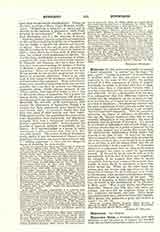

Hypostatic Union, a theological term used with reference to the Incarnation to express the revealed truth that in Christ one person subsists in two natures, the Divine and the human. Hypostasis (upostasis) means, literally, that which lies beneath as basis or foundation. Hence it came to be used by the Greek philosophers to denote reality as distinguished from appearances (Aristotle, “Mund.”, IV, 21). It occurs also in St. Paul’s Epistles (II Cor., ix, 4; xi, 17; Heb., i, 3: iii, 14), but not in the sense of person. Previous to the Council of Nicaea (325) hypostasis was synonymous with ousia, and even St. Augustine (De Trin., V, 8) avers that he sees no difference between them. The distinction in fact was brought about gradually in the course of the controversies to which the Christological heresies gave rise, and was definitively established by the Council of Chalcedon (451), which declared that in Christ the two natures, each retaining its own properties, are united in one subsistence and one person (eis en prosopon kai mian upostasin) (Denzinger, ed. Bannwart, 148). They are not joined in a moral or accidental union (Nestorius), nor commingled (Eutyches), and nevertheless they are substantially united. For further explanation and bibliography See Incarnation; Jesus Christ; Monophysites and Monophysitism; Nature; Person.
E. A. PACE

